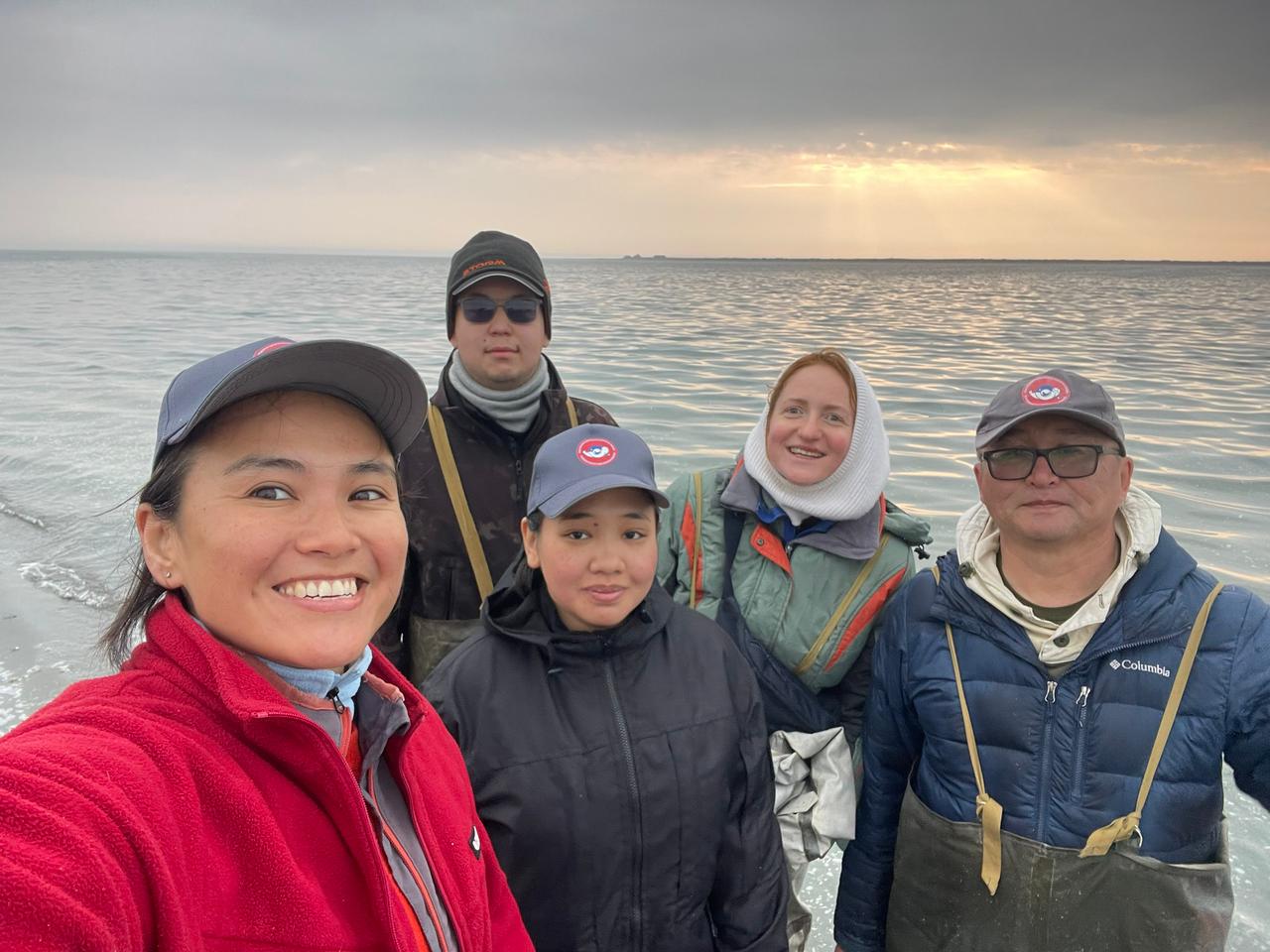- Main
- News
- Changes in the habitats of Caspian seals in Kendirli Bay: the influence of anthropogenic factors and sea regression
Changes in the habitats of Caspian seals in Kendirli Bay: the influence of anthropogenic factors and sea regression

On October 25th, doctoral student Asel Baimukanova from the Faculty of Biology and Biotechnology returned from an expedition that took place in the Middle Caspian Sea, in the Kenderli Bay. The expedition gathered materials on the population, distribution, and behavior of Caspian seals on the new islands.
The seals, which previously formed haul-outs on the islands in the Kenderli Bay, stopped hauling out there in 2019. The last haul-out was recorded in the spring of 2019, with a maximum number of 45 individuals.
The maximum number throughout the years of research since 2015 was recorded in the fall of 2016 – 481 individuals.
The seals stopped hauling out on the islands due to human activities: illegal fishing, shooting near the haul-outs, and intensive boat traffic. The regression of the sea (lowering of the water level) could also be a contributing factor.
Data collected in the fall of 2024 showed that the seals began to gather on new islands (shoals) that formed due to the lowering of the sea level.
The research will continue, but it is already clear that it is necessary to carry out environmental protection measures to protect this unique habitat. The work was carried out within the framework of SDG 14 "Conservation of marine ecosystems". The research was conducted by the Institute of Hydrobiology and Ecology.





